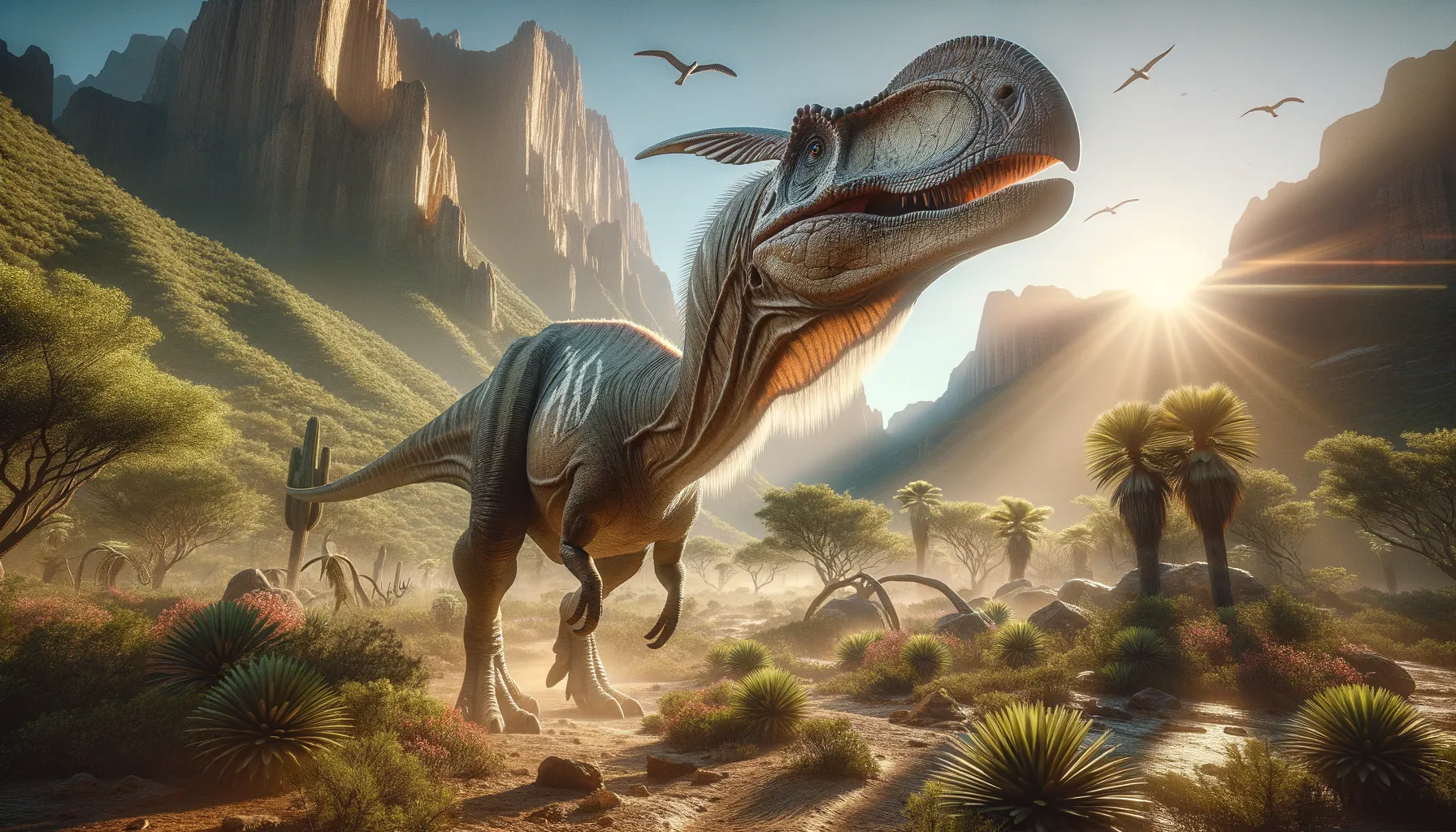
Aquilarhinus
The duck-billed dinosaur with a twist!
Period
Cretaceous
Length
Approximately 10 meters long.
Height
About 3 meters tall at the hip.
Weight
Estimated to weigh around 3 tonnes.
Aquilarhinus is a distinctive member of the duck-billed dinosaurs known for its unique beak shape. This herbivorous dinosaur roamed the Earth during the Late Cretaceous Period, around 80 million years ago. It is categorized under the hadrosaur family and was first discovered in the Big Bend National Park of Texas. Its beak featured a remarkable 'eagle-nose' appearance, contributing to how it might have interacted with its environment and diet.
Diet
Aquilarhinus was an herbivore, primarily feeding on plants. Its specialized beak was adapted to crop a variety of vegetation, including leaves, twigs, and possible aquatic plants.
Hunting
As a herbivore, Aquilarhinus did not hunt but foraged for plants. It likely used its advanced beak to gather food efficiently within its environment.
Environmental challenges
Aquilarhinus faced various challenges such as changes in climate that affected the availability of its food sources. Predation by carnivorous dinosaurs may have also posed a threat. Environmental shifts in the Cretaceous habitat, such as volcanic activity or sea-level changes, might have altered its living conditions.
Speed
Aquilarhinus likely moved at a moderate pace.
Lifespan
Hadrosaurs typically lived for several decades.
First discovery
First discovered in Texas in the 1980s.
Fun Facts
- Aquilarhinus is known for its unique eagle-like beak that sets it apart from other duck-billed dinosaurs.
- This dinosaur was discovered in Texas, USA, adding to the fascinating diversity of North American dinosaur finds.
- Aquilarhinus lived during the Late Cretaceous period, around 80 million years ago.
- The name Aquilarhinus means 'eagle nose' because of the distinctive shape of its snout.
- Aquilarhinus is part of the hadrosaur family, a group of herbivorous dinosaurs known for their duck-billed appearance.
- Fossils of Aquilarhinus helped paleontologists learn more about the evolution of dinosaur beaks and feeding habits.
- The discovery of Aquilarhinus adds a unique piece to the puzzle of how diverse dinosaur ecosystems were during the Cretaceous period.
Growth and Development
Like other hadrosaurs, Aquilarhinus probably grew rapidly during its early years. Juveniles had to reach a substantial size to avoid predators. Growth rings in fossil bones suggest seasonal growth spurts, possibly linked to resource availability.
Habitat
Aquilarhinus inhabited lush, coastal floodplains or swamps with abundant vegetation. This environment provided rich feeding grounds crucial for its herbivorous diet. The presence of rivers and lakes within its habitat likely supported diverse plant life.
Interaction with other species
Aquilarhinus likely lived in herds, which offered protection against predators. Its interactions included peaceful co-existence with other herbivorous dinosaurs and the constant threat of theropod attacks. Natural instincts would drive individuals to stay close to one another.
Natural lifespan
Aquilarhinus lived an average natural lifespan of 20 to 30 years.
Reproduction
Aquilarhinus reproduced by laying eggs, likely in nests built on the ground. Parental care may have been relatively extensive, with adults guarding nests and possibly tending to their young after hatching.
Social behaviour
Hadrosaurs like Aquilarhinus are believed to have been social creatures, forming large groups for feeding and protection. Social interactions included communication through sounds or visual displays to maintain group cohesion.
Fossil locations
Fossils of Aquilarhinus were uncovered in the Big Bend National Park, Texas. These discoveries provided crucial insights into the dinosaur's anatomical features. The site included scattered skeletal remains, helping paleontologists piece together its structure.
